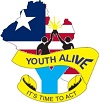
Youth Alive Liberia has continued to advocate for HIV testing as one of the preventive measure to address HIV/AIDS and Gender Based Violence prevention. Over the years, many indigenous or traditional healers have claimed to be able to cure AIDS. To this day, no treatments done by traditional healers have proven to cure HIV infection. We often hear of other people who say they have developed a cure for AIDS. People with HIV are a very vulnerable group because they desperately want to get rid of their life-threatening illness and often will pay large amounts for even a small chance of a cure. Many people see them as a source of easy money and try to exploit them.
Gender based Violence is one of the major contributors of HIV/AIDS and other sexually transmitted infections. In Liberia, women and girls continue to experience violence in different forms. As we implement our work towards delivering HIV prevention, care, and treatment services for the marginalized including the key populations and their networks, some of our project target group shared their grievances regarding forms of violence they experience in their day to day activities. We continue documenting gender based violence cases from different communities in the counties we work in. Most of the cases happen in the homes, perpetuated by family, sexual partner or spouse, while some of them happen on the streets on a daily basis. The violence involved sexual abuse, verbal and psychological violence where the woman has limited opportunity to make decision on how she manages here finance and decision over her body.
These data gives a clear indication that neither the street nor the home is safe for our women and girls concerning HIV/AIDS infection. One of the women pointed out that women face violence on the streets but sometimes they do not know what to do. “I was just walking on Broad Street in town when one man slapped my butt. I felt so bad but I didn’t want more trouble so I just walked,” she said. In most cases, there is no one to speak for the women and so they let it pass. “When these things happen, people will just look at you, only a few may speak but mostly everyone minds their own business.” She added.
“One other woman said that a man touched her breasts while she was walking on the streets and ran away. Most of these cases happen during peak hours when the streets are crowded; everyone is trying to get home.
In the home set up, some women are not given a chance to make some decisions such as when to have sex or even when and when not to use a condom when engaging in sex, putting them at risk of getting infected with HIV/AIDS and other sexually transmitted infections. One of the women we spoke to said the spouse physically assaulted her because she was not ready to have sex at the time.
“Recently my partner beat me up because I refused to have sex with him.” She said.

Scaled-up primary prevention programs are needed, to focus on reducing risk factors for GBV and consequent HIV risk. Programs should be implemented in collaboration with bodies already working on GBV prevention. They should include structural and awareness/education elements, programs in schools, a focus on men as perpetrators and as victims, emphasis on resilience, and positive role models.
Secondary prevention programs centers on recovery from GBV – interventions can increase the resilience of people who experienced GBV but who are not yet HIV positive. Psycho-educational interventions can also advance the negotiating skills of those at risk of GBV. Long-term prevention strategies for the reduction of HIV infection independent of any reduction in GBV could play a role.
